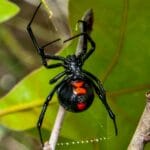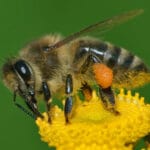Have you ever heard of a worm with a bite that feels like a bee sting? Well, meet the bloodworm—a tiny creature that packs a venomous punch. While their appearance might suggest otherwise, these worms are far from harmless. In this article, we’ll delve into the world of bloodworms, exploring their venom, the potential risks of their bites, and how to stay safe if you encounter these fascinating yet feisty creatures.
Unmasking the Venom: Why Bloodworms Bite
Bloodworms, despite their seemingly innocuous pink bodies, possess a secret weapon: sharp, copper-filled jaws that deliver a venomous bite. Why the venom? It’s all part of their survival strategy. In the wild, bloodworms use their venom to subdue prey, injecting a paralyzing cocktail of toxins that allows them to secure a meal.
While not typically life-threatening to humans, the venom, which shares similarities with that of bees, wasps, blue cobalt tarantulas, and even sea anemones, can trigger a range of reactions, from localized pain and swelling to, in some cases, severe allergic responses.
The Stinging Truth: Symptoms of a Bloodworm Bite
So, what exactly happens when a bloodworm sinks its tiny fangs into human skin? The experience is often described as a sharp, burning pain, comparable to a bee sting. The venom then goes to work, causing an inflammatory response that can lead to:
- Intense Pain: This is often the most immediate and noticeable symptom, with the severity varying depending on individual sensitivity.
- Redness and Swelling: The area around the bite typically becomes red and inflamed, with swelling that can range from mild to significant.
- Itching: Intense itching at the bite site is common and can be quite persistent.
- Allergic Reactions: For individuals with allergies to bloodworm venom, more severe reactions can occur, including hives, difficulty breathing, and in rare instances, anaphylaxis – a life-threatening allergic reaction that requires immediate medical attention.
First Aid Essentials: Treating a Bloodworm Bite
If you find yourself on the receiving end of a bloodworm bite, don’t panic. Most bites can be managed effectively with basic first aid:
- Cleanse the Wound: Wash the affected area thoroughly with soap and water to remove any venom residue and reduce the risk of infection.
- Ice It Down: Apply a cold compress or ice pack to the bite to help minimize swelling and numb the pain.
- Pain Relief: Over-the-counter pain relievers, such as ibuprofen or acetaminophen, can help alleviate discomfort.
- Antihistamines: For itching and mild allergic reactions, over-the-counter antihistamines can provide relief.
Important: If symptoms worsen or you suspect a severe allergic reaction is developing (difficulty breathing, rapid heartbeat, dizziness), seek immediate medical attention.
Preventing the Unwanted Encounter: Safety Tips
The best way to deal with bloodworm bites is to avoid them altogether. Here’s how:
- Know Your Surroundings: Be aware of bloodworm habitats, which include muddy bottoms of coastal waters, freshwater ponds, and even polluted areas.
- Gear Up: If you’re fishing or wading in areas where bloodworms may be present, wear protective clothing, such as waders and waterproof gloves.
- Handle with Care: Anglers should exercise extreme caution when baiting hooks with bloodworms. Consider using tools to handle the worms and avoid direct contact.
- Teach Children About Safety: Educate children about bloodworms and the importance of not touching them.
Ongoing Research and Evolving Knowledge: What We’re Still Learning
While we know a fair amount about bloodworms and their venomous bites, scientific research is ongoing, and our understanding of these creatures continues to evolve. For example, scientists are working to fully characterize the complex mix of toxins found in bloodworm venom, which could lead to the development of more effective treatments for bites and a deeper understanding of potential allergic responses.
Conclusion
While bloodworm bites can be painful and, in some cases, pose a serious health risk, understanding these creatures and taking simple precautions can drastically reduce your chances of an unpleasant encounter. By respecting their place in the ecosystem and prioritizing safety, we can coexist with these fascinating creatures and appreciate the wonders of the natural world without suffering the sting.
- Unveiling Bernhard Caesar Einstein’s Scientific Achievements: A Legacy in Engineering - July 15, 2025
- Uncover who is Jerry McSorley: CEO, Family Man, Business Success Story - July 15, 2025
- Discover Bernhard Caesar Einstein’s Scientific Contributions: Unveiling a Legacy Beyond Einstein - July 15, 2025














